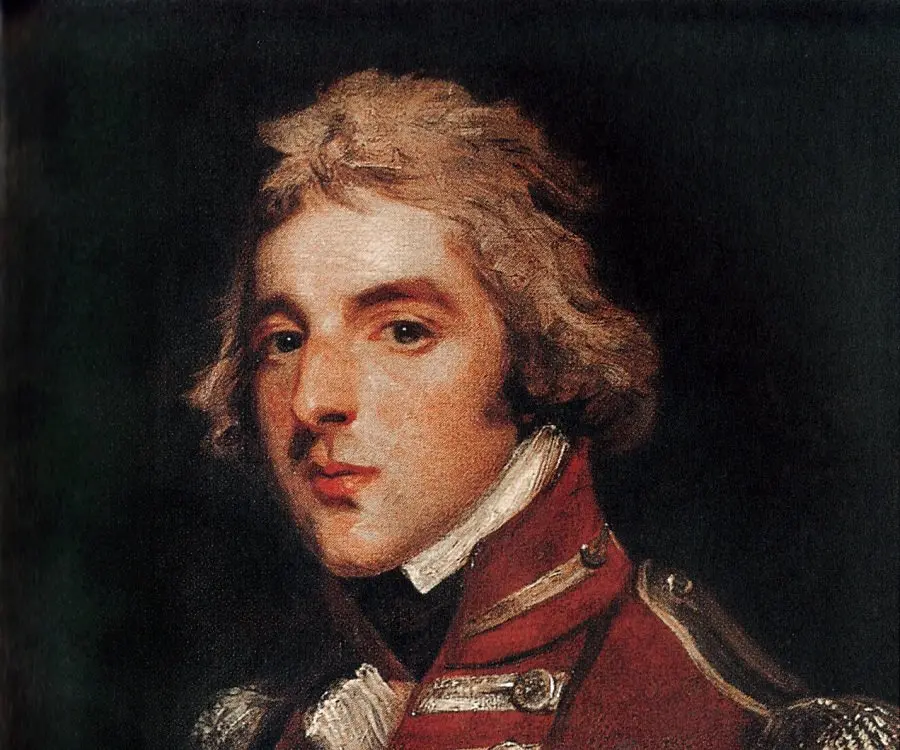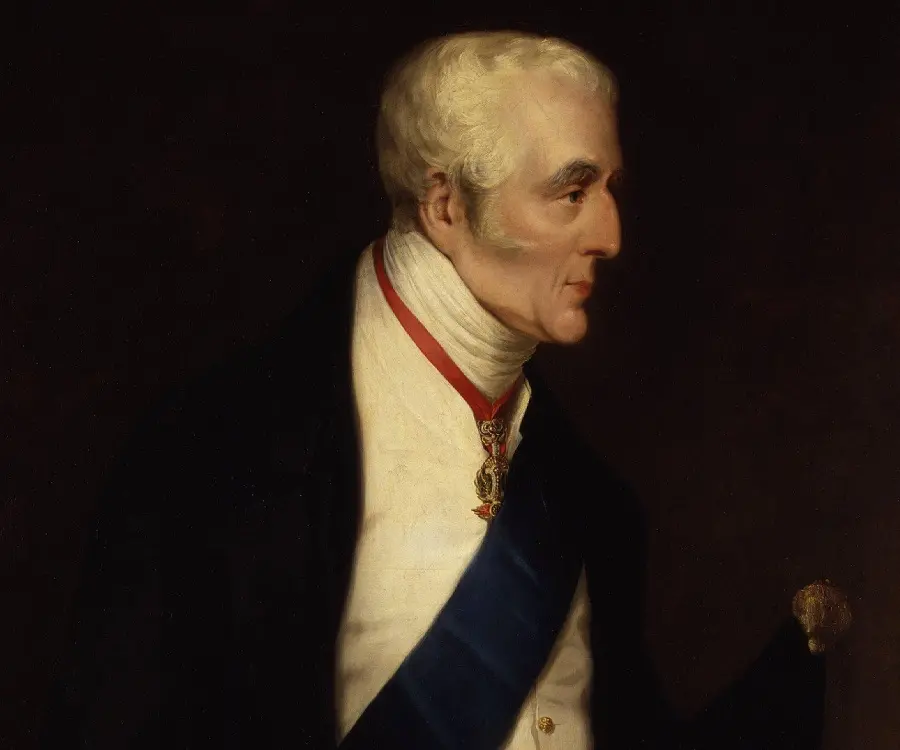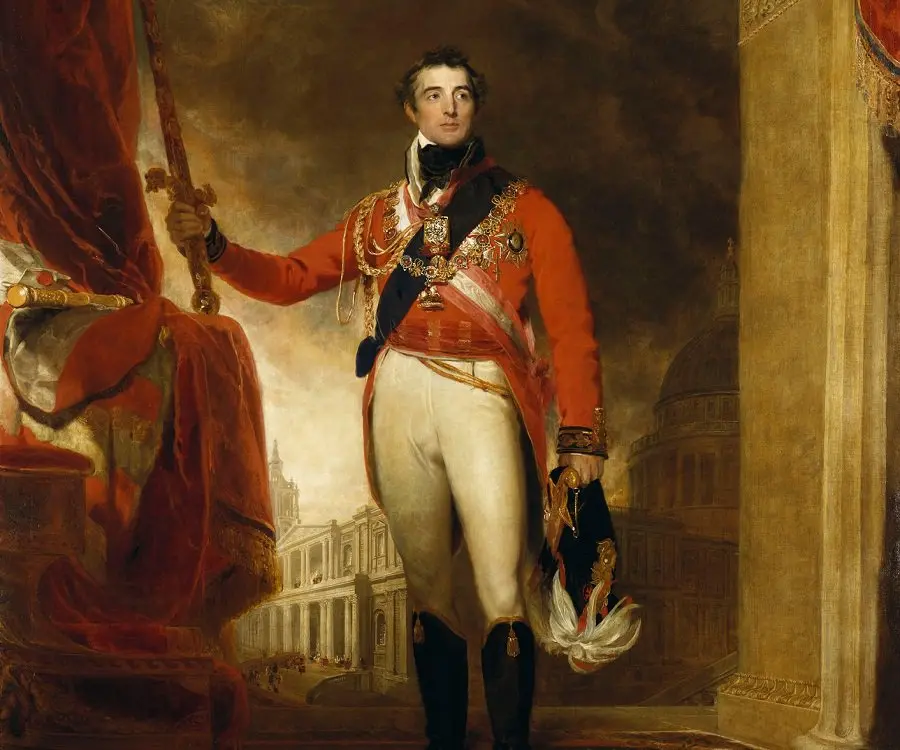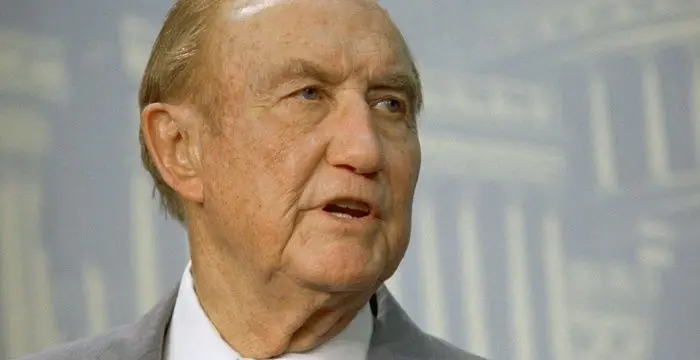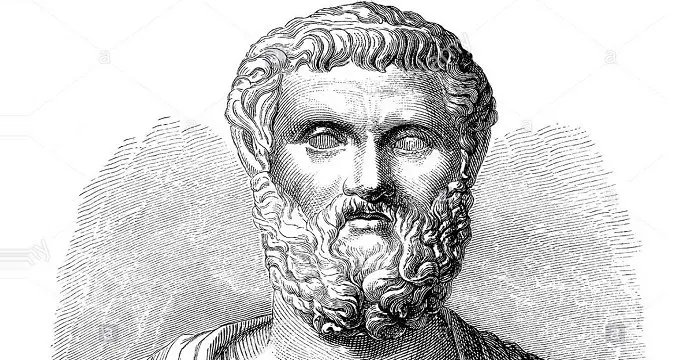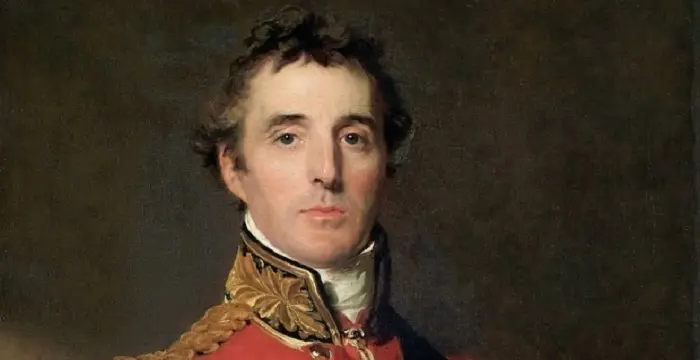
Arthur Wellesley, 1st Duke of Wellington - Former First Lord of the Treasury of the United Kingdom, Birthday and Life
Arthur Wellesley, 1st Duke of Wellington's Personal Details
Duke of Wellington was one of the most legendary political and military personalities
| Information | Detail |
|---|---|
| Birthday | May 1, 1769 |
| Died on | September 14, 1852 |
| Nationality | British |
| Famous | Eton College, Leaders, Political Leaders, Former First Lord of the Treasury of the United Kingdom |
| Nick names | The Beau, The Peer, The Eagle, Douro Douro, Beau Douro, Sepoy General, The Beef, The Iron Duke |
| Spouses | Catherine Pakenham |
| Known as | Duke of Wellington |
| Childrens | Arthur, Charles |
| Universities |
|
| Notable Alumnis |
|
| Birth Place | Dublin |
| Political Ideology | Tory |
| Religion | Christian |
| Gender | Male |
| Father | Garret Wesley, 1st Earl of Mornington |
| Mother | Anne |
| Sun Sign | Taurus |
| Born in | Dublin |
| Famous as | Former First Lord of the Treasury of the United Kingdom |
| Died at Age | 83 |
Arthur Wellesley, 1st Duke of Wellington's photo
Who is Arthur Wellesley, 1st Duke of Wellington?
One among the world’s most legendary military leaders, Arthur Wellesley, the first Duke of Wellington was perhaps the greatest of British soldiers in history. Widely regarded as the greatest man in the 19th century, Wellesley was despised by the men he commanded, for he was a rather strict disciplinarian. Born into a family of noblemen, Wellesley began his career in the army after his family faced financial problems post the death of his father. He was victorious at Fourth Anglo-Mysore War, the Battle of Seringapatam, Peninsular War and the Battle of Waterloo. After serving a successful term as an army man, he returned to become the prime minster of The United Kingdom and Commander-in-Chief of the British Army, a position that he retained until his death. He is known for his unique defensive commanding style and today, many of his military strategies and battle plans are a part of academic programs in military academies across the world. Wellesley always planned extensively before battles and is thus, regarded as one among the best defence commanders of all time.To know more about his childhood, personal life and achievements in the field of military and politics, scroll down and continue to read this biography.
// Famous Leaders
Edi Rama
Edi Rama is the current Prime Minister of Albania. Check out this biography to know about his childhood, life, achievements, works & timeline.
Tecumseh
Tecumseh was a Native American leader of the Shawnee clan. This biography profiles his childhood, life and timeline.
Khalifa bin Zayed Al Nahyan
Sheikh Khalifa bin Zayed Al Nahyan is the current President of the United Arab Emirates (UAE). Check out this biography to know about his birthday, childhood, family life, achievements and fun facts about him.
Childhood & Early Life
He was born as ‘The Honourable Arthur Wesley’ in Dublin, Ireland to Garret Wesley, who was the 1st Earl of Mornington and Anne Hill-Trevor, who was the daughter of Arthur Hill-Trevor, 1st Viscount Dungannon.
He grew up in two of his family homes, a bungalow in Dublin and the Dangan Castle located in County Meath. While he was at Dublin, he attended Mr. Whyte's Academy and in County Meath he went to the diocesan school.
He studied at the Eton College until 1784 and later went to the French Royal Academy of Equitation in Angers, where he trained to be a horseman and also studied French.
Career
In 1787, he joined the army as a junior rank officer and he was assigned to The 73rd Regiment of Foot. In October that year, he was appointed as the Chief of Staff to Lord Buckingham, the then Lord Lieutenant of Ireland.
In 1788, after he became a lieutenant, he was assigned to work in the 41st Regiment of Foot. The next year he was assigned to work for the 12th (Prince of Wales's) Regiment of (Light) Dragoons.
In 1789, he became a Member of Parliament for Trim in the Irish House of Commons and served in the Dublin Castle. He was later promoted to the position of captain and was appointed to the 58th Regiment of Foot.
By 1793, he was promoted to the position of major in the British Army and after a few months he was upgraded to the post of lieutenant-colonelcy.
In September 1793, he became the commander of a brigade. He later returned as a Member of Parliament for Trim but was unhappy as he was not promoted. Subsequently, he returned to the army.
In 1796, he travelled with his regiment to India. In 1798, he was commissioned to be a part of the Fourth Anglo-Mysore War, in order to capture and extend the rule of the British Empire in India. He also led a night attack during the Battle of Seringapatam.
In 1801, after defeating Tipu Sultan, the ruler of Mysore, he became the brigadier-general and resided in Sultan’s summer palace. He made many reforms in the tax system.
In 1803, he was commissioned to be part of The Second Anglo-Maratha War. The war ended in the year 1805 and it resulted in the victory of the British Empire.
In 1805, he was commissioned to serve at the Anglo-Russian expedition to north Germany and in 1807, he commanded the infantry brigade in the Second Battle of Copenhagen.
In 1808, he came back to England, where he was made lieutenant general. He defeated the French forces in the war against them, which occurred in the Iberian Peninsula region.
He led the Anglo-Portuguese Army, which was victorious in the second Battle of Porto, during which he crossed the Douro River. During the Douro river coup, the Porto forces were found to be weak.
In 1810, he slowed the French army, by constructing the Lines of Torres Vedras, which was a fortress that was built in order to prevent French invasion.
In 1814, after the Peninsular War, French forces withdrew from Spain and Portugal and Napoleon was abdicated. He returned back victorious and was given the tittle of the Duke of Wellington.
Until Napoleon returned in 1815, he served as the ambassador to France and also attended the Congress of Vienna. He later, commanded the allied armies and defeated the Napoleon forces in the Battle of Waterloo.
In 1818, he assumed a post in Lord Liverpool's Tory government and in the following year, he became Governor of Plymouth.
In 1827, he was appointed Commander-in-Chief of the British Army.
In 1828, he resigned as Commander-in-Chief and became Prime Minister of the United Kingdom.
In 1829, he passed the Catholic Relief Act, which granted all Catholics in the country civil rights and removed restrictions that were caused by any previous Acts. This was one of the highlights of his tenure.
In 1846, he retired from politics although he still retained his position as the Commander-in-Chief.
In 1848, he helped organise a military force to protect London during European Revolution.
Personal Life & Legacy
In 1806, he married Kitty Pakenham. The couple led a very unhappy married life and spent several years living apart from each other. She died of cancer in 1831.
He died at the age of 83, after suffering from a series of strokes that resulted in epileptic seizure. He was laid to rest at the St Paul's Cathedral, London.
Trivia
This British politician, Prime Minster and Commander-in-Chief rarely spoke to his servants and rather choose to write his orders to them on a note pad, which he often left on his dressing table.
// Famous Eton College
Karl Marx
Karl Marx was a Prussian-German philosopher, revolutionary, historian and socialist whose communist ideologies and works laid the foundation for ‘Marxism’. Explore this biography to learn more about his childhood, life achievements, works & timeline.
Antony Armstrong-Jones, 1st Earl of Snowdon
Antony Armstrong-Jones was a British photographer and film-maker. Check out this biography formore information on his childhood, family, personal life, etc.
Bear Grylls
Bear Grylls is an adventurer popularly known for his bizarre survival tactics in reality television series Man vs. Wild. This biography provides detailed information about his childhood, profile, career and timeline.
Arthur Wellesley, 1st Duke of Wellington's awards
| Year | Name | Award |
|---|---|---|
Other | ||
| 0 | - Knight Grand Cross of the Order of the Sword | |
| 0 | - Knight of the Golden Fleece | |
| 0 | - Knight Grand Cross of the Military William Order | |
| 0 | - Knight of the Order of the Garter | |
| 0 | - Knight Grand Cross of the Order of the Bath | |
| 0 | - Knight Grand Cross of the Royal Guelphic Order | |
Arthur Wellesley, 1st Duke of Wellington biography timelines
- // 1st May 1769He was born as ‘The Honourable Arthur Wesley’ in Dublin, Ireland to Garret Wesley, who was the 1st Earl of Mornington and Anne Hill-Trevor, who was the daughter of Arthur Hill-Trevor, 1st Viscount Dungannon.
- // 1784He studied at the Eton College until 1784 and later went to the French Royal Academy of Equitation in Angers, where he trained to be a horseman and also studied French.
- // 1787In 1787, he joined the army as a junior rank officer and he was assigned to The 73rd Regiment of Foot. In October that year, he was appointed as the Chief of Staff to Lord Buckingham, the then Lord Lieutenant of Ireland.
- // 1788In 1788, after he became a lieutenant, he was assigned to work in the 41st Regiment of Foot. The next year he was assigned to work for the 12th (Prince of Wales's) Regiment of (Light) Dragoons.
- // 1789In 1789, he became a Member of Parliament for Trim in the Irish House of Commons and served in the Dublin Castle. He was later promoted to the position of captain and was appointed to the 58th Regiment of Foot.
- // 1793By 1793, he was promoted to the position of major in the British Army and after a few months he was upgraded to the post of lieutenant-colonelcy.
- // 1793In September 1793, he became the commander of a brigade. He later returned as a Member of Parliament for Trim but was unhappy as he was not promoted. Subsequently, he returned to the army.
- // 1796In 1796, he travelled with his regiment to India. In 1798, he was commissioned to be a part of the Fourth Anglo-Mysore War, in order to capture and extend the rule of the British Empire in India. He also led a night attack during the Battle of Seringapatam.
- // 1801In 1801, after defeating Tipu Sultan, the ruler of Mysore, he became the brigadier-general and resided in Sultan’s summer palace. He made many reforms in the tax system.
- // 1803In 1803, he was commissioned to be part of The Second Anglo-Maratha War. The war ended in the year 1805 and it resulted in the victory of the British Empire.
- // 1805In 1805, he was commissioned to serve at the Anglo-Russian expedition to north Germany and in 1807, he commanded the infantry brigade in the Second Battle of Copenhagen.
- // 1806 To 1831In 1806, he married Kitty Pakenham. The couple led a very unhappy married life and spent several years living apart from each other. She died of cancer in 1831.
- // 1808In 1808, he came back to England, where he was made lieutenant general. He defeated the French forces in the war against them, which occurred in the Iberian Peninsula region.
- // 1810In 1810, he slowed the French army, by constructing the Lines of Torres Vedras, which was a fortress that was built in order to prevent French invasion.
- // 1814In 1814, after the Peninsular War, French forces withdrew from Spain and Portugal and Napoleon was abdicated. He returned back victorious and was given the tittle of the Duke of Wellington.
- // 1815Until Napoleon returned in 1815, he served as the ambassador to France and also attended the Congress of Vienna. He later, commanded the allied armies and defeated the Napoleon forces in the Battle of Waterloo.
- // 1818In 1818, he assumed a post in Lord Liverpool's Tory government and in the following year, he became Governor of Plymouth.
- // 1827In 1827, he was appointed Commander-in-Chief of the British Army.
- // 1828In 1828, he resigned as Commander-in-Chief and became Prime Minister of the United Kingdom.
- // 1829In 1829, he passed the Catholic Relief Act, which granted all Catholics in the country civil rights and removed restrictions that were caused by any previous Acts. This was one of the highlights of his tenure.
- // 1846In 1846, he retired from politics although he still retained his position as the Commander-in-Chief.
- // 1848In 1848, he helped organise a military force to protect London during European Revolution.
// Famous Political Leaders
Edi Rama
Edi Rama is the current Prime Minister of Albania. Check out this biography to know about his childhood, life, achievements, works & timeline.
Khalifa bin Zayed Al Nahyan
Sheikh Khalifa bin Zayed Al Nahyan is the current President of the United Arab Emirates (UAE). Check out this biography to know about his birthday, childhood, family life, achievements and fun facts about him.
Leo Varadkar
Cam Leo Varadkar is the current Taoiseach—the Prime Minister—of the Republic of Ireland. Check out this biography to know about his childhood, family life, achievements and other facts about his life.
Strom Thurmond
Strom Thurmond was an American politician, who represented the state of South Carolina in the United States senate for 48 years.
Solon
Solon was an Athenian lawmaker, poet and politician. He is considered as one of the ‘Seven Wise Men’ in Greek culture. This biography provides detailed information about his childhood, life, career, works, achievements and timeline.
Mohammed bin Salman
Mohammed bin Salman is the Crown Prince of Saudi Arabia and the heir apparent to the throne. Check out this biography to know about his childhood, family life, achievements and other facts about him.
Arthur Wellesley, 1st Duke of Wellington's FAQ
What is Arthur Wellesley, 1st Duke of Wellington birthday?
Arthur Wellesley, 1st Duke of Wellington was born at 1769-05-01
When was Arthur Wellesley, 1st Duke of Wellington died?
Arthur Wellesley, 1st Duke of Wellington was died at 1852-09-14
Where was Arthur Wellesley, 1st Duke of Wellington died?
Arthur Wellesley, 1st Duke of Wellington was died in Walmer
Which age was Arthur Wellesley, 1st Duke of Wellington died?
Arthur Wellesley, 1st Duke of Wellington was died at age 83
Where is Arthur Wellesley, 1st Duke of Wellington's birth place?
Arthur Wellesley, 1st Duke of Wellington was born in Dublin
What is Arthur Wellesley, 1st Duke of Wellington nationalities?
Arthur Wellesley, 1st Duke of Wellington's nationalities is British
What is Arthur Wellesley, 1st Duke of Wellington nick names?
Arthur Wellesley, 1st Duke of Wellington's nickNames is The Beau, The Peer, The Eagle, Douro Douro, Beau Douro, Sepoy General, The Beef, The Iron Duke
Who is Arthur Wellesley, 1st Duke of Wellington spouses?
Arthur Wellesley, 1st Duke of Wellington's spouses is Catherine Pakenham
Who is Arthur Wellesley, 1st Duke of Wellington childrens?
Arthur Wellesley, 1st Duke of Wellington's childrens is Arthur, Charles
What was Arthur Wellesley, 1st Duke of Wellington universities?
Arthur Wellesley, 1st Duke of Wellington studied at Eton College, Eton College
What was Arthur Wellesley, 1st Duke of Wellington notable alumnis?
Arthur Wellesley, 1st Duke of Wellington's notable alumnis is Eton College
What is Arthur Wellesley, 1st Duke of Wellington's political ideology?
Arthur Wellesley, 1st Duke of Wellington's political ideology is Tory
What is Arthur Wellesley, 1st Duke of Wellington's religion?
Arthur Wellesley, 1st Duke of Wellington's religion is Christian
Who is Arthur Wellesley, 1st Duke of Wellington's father?
Arthur Wellesley, 1st Duke of Wellington's father is Garret Wesley, 1st Earl of Mornington
Who is Arthur Wellesley, 1st Duke of Wellington's mother?
Arthur Wellesley, 1st Duke of Wellington's mother is Anne
What is Arthur Wellesley, 1st Duke of Wellington's sun sign?
Arthur Wellesley, 1st Duke of Wellington is Taurus
How famous is Arthur Wellesley, 1st Duke of Wellington?
Arthur Wellesley, 1st Duke of Wellington is famouse as Former First Lord of the Treasury of the United Kingdom
